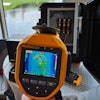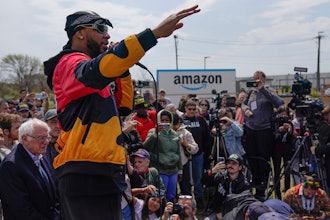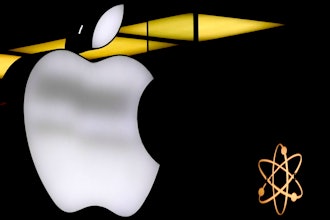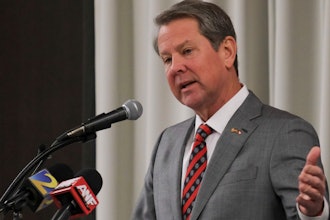Improving performance is about changing behavior and developing a culture that habitually practices the desired behavior. Reward and Recognition is an important and valuable tool for establishing that culture.
Reward and Recognition is a difficult practice. It seems that the larger the organization is the more difficult the Reward and Recognition practice can be. It’s true that diversity is good, but diversity also makes it challenging to find ways to do or say something that is meaningful or appreciated by so many differing perspectives and ideals.
Even though effective Reward and Recognition is challenging, please don’t overlook its importance to affecting the changes that you want or need to drive because of that.
Without writing several pages of observations to prove a theory, I submit to the reader a simple axiom. A tried and true method of developing correct behavior and desired culture that is part of all of our mutual programming, regardless of age, background, language, or culture, is to reward that behavior we desire and to punish that behavior we do not want repeated.
Given that axiom, let’s look at how we can develop an effective reward methodology or system. One method or system is not right for all. In most cases, we must adjust our approach not just to suit our own organization, but also to suit an individual personality.
Human beings are complex in personality. Organizations of human beings are even more complex, hence the challenge. However, our complexities have many fundamental behaviors in common. Here are some examples:
- We desire to be wanted or appreciated.
- We don’t like doing something for nothing.
- We enjoy repeating positive experiences and avoid repeating negative ones.
- Our decisions and, therefore, our behavior are affected as much or more by emotions and relationships than by logic or rules.
- The more impactful the experience, the better we remember and the more we adjust.
That list is enough for us to work with to make an effective Reward and Recognition system. The list is rather short. That is not to say that Reward and Recognition is simple. The challenge is not in what to do, but in how to do it.
Here is a common and simple example of what I mean. Let’s say that a team member has recently gone above and beyond the normal call of duty to accomplish an important outcome. We need to let this team member know that we have noticed and appreciate it what he has done; and we probably need to recognize that we don’t necessarily expect that extraordinary effort every day.
How to effectively convey our appreciation can be the complicated part. Some people enjoy being recognized in front of all of their peers. Some find that embarrassing and would rather not. Some might appreciate lunch with the boss, while others might just assume not spend any unnecessary time in a leader’s presence. Some might appreciate a simple handwritten letter, while others might find such a gesture trite. Figuring out the right method, the “how,” is the hard part.
With that said, let me offer some observations about what makes effective Reward and Recognition to help trigger the process, then let me offer some thoughts and ideas for possible methods of delivery. Ultimately, you will need to determine what the best delivery is for the person or people to be rewarded.
On Effective Reward and Recognition
The best, most impactful means of driving desired behavior is also the subtlest and it requires the greatest attention. That is to catch someone in the act and to reinforce the behavior as soon as it occurs. It lets everyone present know that you are paying attention, that you appreciate the cooperation and courage the individual or team displayed and, if done appropriately, it imparts that positive emotional experience that people will desire to share, repeat, or get some of their own if they are merely observing.
The famous Pavlov proved the effectiveness of the immediate-response reward and recognition method. We obviously don’t want to be so extreme, but we do want to make it our first-order strategy.
Many times we focus too much on the word “Reward” and not enough on the word “Recognition.” Don’t forget the second half of the phrase. The second part of our strategy should be to actively monitor metrics and progress for predetermined milestones and turning points. When individuals, teams, or the organization achieves an important step, make an impactful statement.
Think about it for a moment. If our leaders don’t appear to care that we have accomplished, changed, or achieved a milestone, why should any of us? If we are using metrics and program plans appropriately then we are doing so to monitor progress. Celebrate progress when it is achieved. The closer the celebration is to the achievement, the more impact it has.
It is important to be prompt with Reward and Recognition. Consider this: if your family celebrated your birthday three months after it passed, would you feel important, or would you know that the celebration was just an obligatory ritual?
The last part of our strategy is to balance consistency with flexibility. I know the two words in the same phrase are a bit of an oxymoron. This gets toward the tough part. If we determine that something is worth recognizing, we should do so every time it occurs. However, we should be willing to adjust the recognition to suit the individuals or the teams, according to their personality.
For the large organizations where consistency is important, here is my best advice. Have a standard, consistent form of “public” recognition for the behavior or achievement. Make it meaningful and important to the general public audience, but not embarrassing for the individual. Then, make it that individual’s, or team leader’s responsibility to reward the achievement in a way that is personally meaningful.
I worked in one organization that conducted almost no reward or recognition. It struggled terribly to affect the sort of behavioral change it desired. However, when my leaders did even small things to recognize my efforts, they meant a great deal to me.
Contrarily, I worked for another organization that was very fond of Reward and Recognition. I have a pile (literal) of certificates and other awards for my accomplishments (recognition). I also received some significant rewards for jobs done well or outstanding performance. Ironically, the experiences that I recall best were the ones my peers or leaders made personal.
The lesson I take away from both experiences is this: The Reward and Recognition that sticks best is that which is delivered in a personal and meaningful way.
Let me sum up the strategy. Be “on-the-spot” with acknowledging the correct and desired behavior. Be prompt to announce achievements of milestones, changes, or accomplishments and show that it is important to you, to the organization, and make it important to everyone else. Be consistent about what is recognized and rewarded, but be personal in how the recognition or reward is imparted.
On Ways to Make a Positive Impact
I’ll mention a few ideas in particular because I feel they encompass those elements listed above regarding our common human desires or behavioral responses. The following is not a comprehensive list, but should give some ideas from which to build.
The first thing to consider is how the recipients will respond to public or private recognition. Many of us will appreciate it either way, or any way we can get it. Some of us prefer not to be made into a public spectacle, while others thrive on public recognition. Consider the personalities of your individuals or teams, and the culture of your organization.
In many cases, a subdued, but meaningful public announcement is warranted because it tells your entire organization about the right behavior or the important accomplishment. This is an important part of successful Reward and Recognition. If your recipients aren’t likely to respond positively to the spotlight, just name them and the accomplishment and keep the discussion focused on the significance of the accomplishment, rather than making a big deal about the person.
When the recipient prefers not to be a public celebrity, we must follow up with a reward or some recognition that is more personal. The trick to a more personal recognition is to consider the relationship between the individual and the leader. If the relationship encompasses conversations beyond the minimum necessary to communicate professionally and include personal interests, taking the individual to lunch or dinner or other similar, more social opportunities can be meaningful. Also, a thank-you card or a letter with details and earnest and honest language can be impactful.
If the relationship between the leader and the recipient is purely professional, social rewards might seem more like punishment, especially to the bashful introvert. Instead, consider gift cards, dinner with a guest of the recipient’s choice to a nice restaurant, paid by the company, or other tangible rewards that don’t involve forced socialization with the workplace can be more meaningful. Try to pick something that is of interest specific to the individual.
Not everyone cares for the same reward. One individual might prize a fine dinner while another might prefer a gift card to the local superstore. Find out their hobbies or interests. If they hunt or do other outdoor hobbies, get a gift card to a sporting goods store, for example. The key to making tangible rewards genuinely rewarding is to demonstrate that they are specific to the individual and not just a random token because the program policy made you.
Recognition in front of team members with whom individuals have a strong relationship or bond can leverage elements of both the public and private recognition. Recognizing someone in front of an intimate group can be very potent. Generally speaking, we value the attention of our friends much more than we care about the opinions of strangers.
Taking a cue from a sports coach, take the whole team out to lunch or, if they don’t respond particularly to the leader, send the whole team out to the arcade or pool hall, but let everyone know that an individual’s particular accomplishment or effort won the prize for the whole team. Such gestures can be very impactful to everyone involved.
The theme of the previous few paragraphs is relationships. Understand recipients’ relationships and provide reward and recognition that is appropriate to those relationships.
I recently received recognition for some volunteer work I did. I received a certificate in front of a big crowd while a list of my work and accomplishments were read to the gathering. That would not have been a big deal to me. However, the event was a dinner, and the leader invited my entire family, my parents too, to the event. The fact that my spouse, my children, and my parents (which must have required some string pulling and some above-and-beyond coordination on the leader’s part) were there to see me get my award makes it the only one I have felt compelled to hang on my wall. Relationships should absolutely be part of the process.
Don’t use Reward and Recognition to try to build relationships. It’s, in my opinion, too much like bribery, and it builds the relationship on a poor foundation.
Whether it is for public recognition or private reward, look to an emotional stirring metaphor as a means to communicate the importance of the accomplishment or action, and give importance to the reward. It’s not a big deal when someone hands you a certificate and shakes your hand. It can be if it is accompanied by a fancy dinner, a big celebration, or if it’s the company president in front of the entire business unit.
But, again, the spectacle isn’t appreciated the same way by everyone, and while it may be a big deal to the recipient; it may just be a boring obligation for those in attendance. To make the message hit home for both the recipient and the crowd, match it with a meaningful story or example. Take a lesson from history, a fable, or simply take the time to explain why the accomplishment is important to the organization. The more stirring a story is, the more memorable the recognition and the greater the impact.
The same goes for the simple thank-you card or hand-written letter. Saying thanks is fine, but saying thanks with a stirring story or by likening the recipient to a famous personality or even an unknown figure that did something meaningful can make a big difference.
Also, the metaphor can be entertaining, as long as it’s pointed. One recognition that I gave out and that received much comment was simple. One of my team members attacked and resolved a problem process that no one wanted to touch. I went to a hobby store and bought an inexpensive die cast model of a WWII Japanese Zero fighter plane, and presented him with the “Kamikaze” award. Of course there was no such thing – I made it up for the occasion.
I gave it to him in front of a small collection of his peers whom he was mentoring through some process improvement methodologies and some of those who helped him with his project. It was somewhat humorous, but it was also clear that my teammate was recognized for having the courage to take on a challenge everyone else thought was “suicide.”
After the meeting, he received a great deal of concurrence from his peers concerning the validity of the “award” and many of them complemented me for recognizing his persistence and confidence. Here’s the reason I keep that one in my mental box of successes. Everyone in that room got a message. Everyone in that room learned to second-guess whether a process problem was really too difficult to solve and not to doubt if the methods work.
That example brings up one final point. Don’t underestimate the power of ceremony. Ceremony doesn’t need to be big and elaborate, with extraordinary preparation and a large crowd, though it certainly can be. Ceremony can be simple and subdued, but it should always be memorable.
Incorporate metaphor, invite the right relationships, and do more than just give a certificate and a gift card. Conduct some form of ceremony that incorporates and represents the message you want everyone in the room to receive. Ceremony makes it memorable, and if that ceremony is particularly specific to the individuals and the accomplishment it will have more impact.
Let’s sum up. Reward and Recognition is part of how we human beings are all programmed. Therefore, Reward and Recognition is an important aspect of driving behavioral change that enables significant performance improvement.
Our strategy for successful Reward and Recognition must include on-the-spot acknowledgement of desired behavior and outcomes, prompt communication of achievements, consistent in recognition of the same achievements, but personal in how success and behavior is rewarded. To make the recognition a positive and memorable experience for both recipients and observers, be sensitive to preferences for public or private recognition. Include the best relationships in the recognition event, and choose tangible rewards that are specific to the recipients’ personal interests or needs. Use metaphor to impart meaning and significance, and don’t discount the impact of ceremony.
Take some time this week and write down some ideas and thoughts for improving your organization’s Reward and Recognition practices. At least consider your own habits and methods. The more you put into your Reward and Recognition, the more powerfully you can drive or sustain the culture you desire and need.
Stay wise, friends.
If you like what you just read, find more of Alan’s thoughts at www.bizwizwithin.com.























